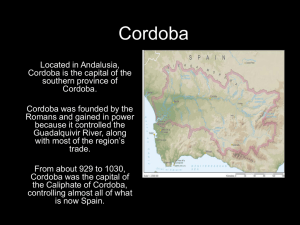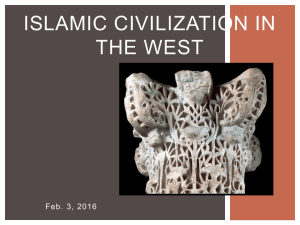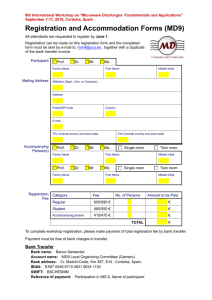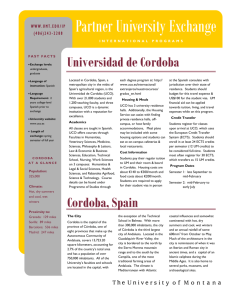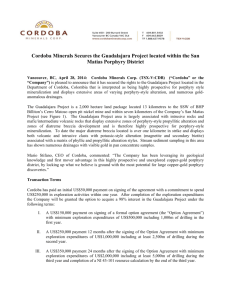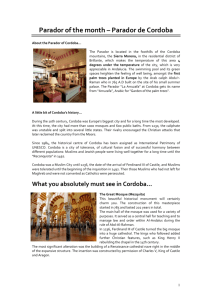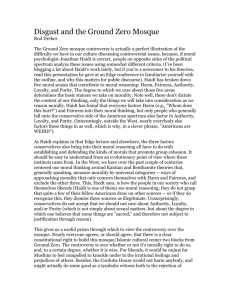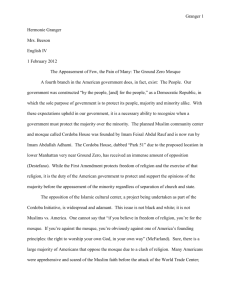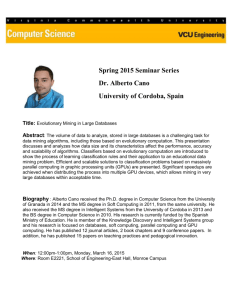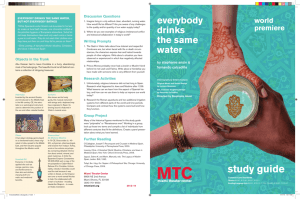SITE INSPECTION,1st JULY
advertisement
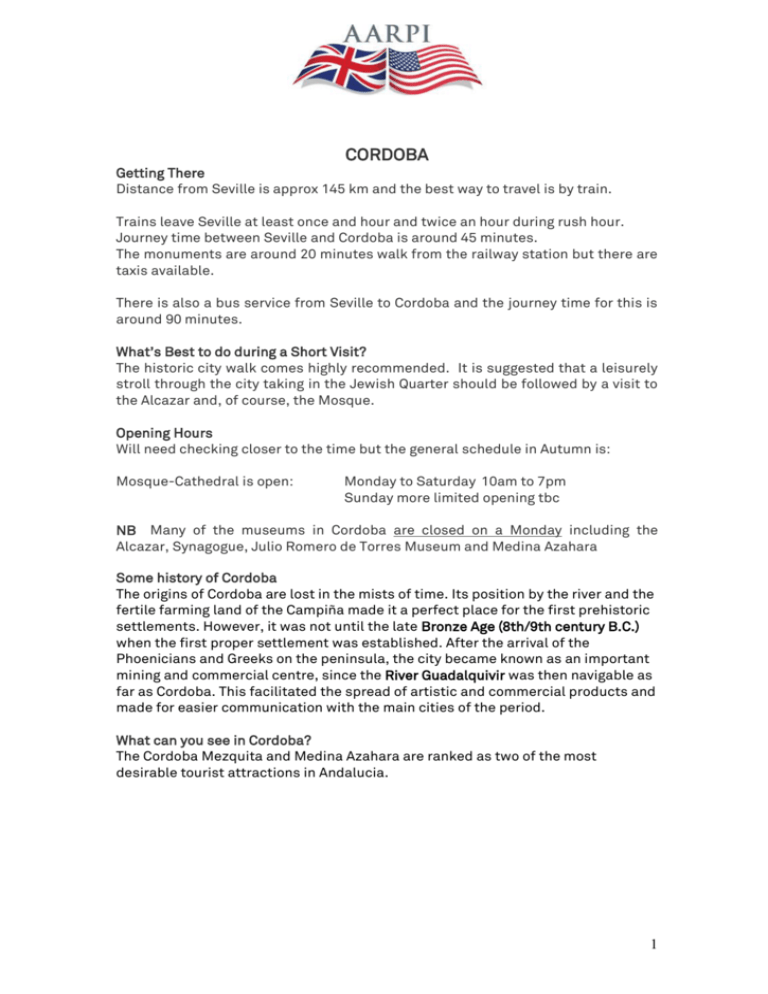
CORDOBA Getting There Distance from Seville is approx 145 km and the best way to travel is by train. Trains leave Seville at least once and hour and twice an hour during rush hour. Journey time between Seville and Cordoba is around 45 minutes. The monuments are around 20 minutes walk from the railway station but there are taxis available. There is also a bus service from Seville to Cordoba and the journey time for this is around 90 minutes. What’s Best to do during a Short Visit? The historic city walk comes highly recommended. It is suggested that a leisurely stroll through the city taking in the Jewish Quarter should be followed by a visit to the Alcazar and, of course, the Mosque. Opening Hours Will need checking closer to the time but the general schedule in Autumn is: Mosque-Cathedral is open: Monday to Saturday 10am to 7pm Sunday more limited opening tbc NB Many of the museums in Cordoba are closed on a Monday including the Alcazar, Synagogue, Julio Romero de Torres Museum and Medina Azahara Some history of Cordoba The origins of Cordoba are lost in the mists of time. Its position by the river and the fertile farming land of the Campiña made it a perfect place for the first prehistoric settlements. However, it was not until the late Bronze Age (8th/9th century B.C.) when the first proper settlement was established. After the arrival of the Phoenicians and Greeks on the peninsula, the city became known as an important mining and commercial centre, since the River Guadalquivir was then navigable as far as Cordoba. This facilitated the spread of artistic and commercial products and made for easier communication with the main cities of the period. What can you see in Cordoba? The Cordoba Mezquita and Medina Azahara are ranked as two of the most desirable tourist attractions in Andalucia. 1 CORDOBA’S GREAT MOSQUE Arguably one of the most beautiful examples of Islamic workmanship Cordoba's great mosque (La Mezquita) is the jewel in the crown of the Province of Cordoba, and possibly the whole of Andalucia. Construction of Cordoba's Great Mosque begun in 784 A.D. and took well over two centuries to be completed. Once finished it was the most magnificent of all the mosques in Cordoba and at the time it was also the second largest of all the mosques in the Muslim world. Once inside the outer walls there is a pleasant courtyard/garden. The interior is most notable for the symmetry of the 1000 plus columns that support the high ceilings. The columns are made from marble, granite, onyx and jasper that were originally from pieces of a Roman temple that lay on the same site. The conversion of it from an Islamic Mosque to a Christian church is very obvious as the interior walls are decorated with tributes to prominent people of the province and there is a large altar located in the centre of the building. MEDINA AZAHARA The 1000 year old ruins of the forgotten city of Medina Azahara are a remarkable site. Built approximately five kilometres from the city of Cordoba the ruins were buried until about 95 years ago. However, before it was buried Medina Azahara was the largest known city in Western Europe to have been built with a new canvas - there were no previous ruins. The site of the city was very strategic. Located between the sierra and the plains it has wonderful views of the surrounding countryside. The entrance to the site is at its highest point and as you enter the view is spectacular as you can basically make out the entire layout of the city. 2 ALCAZAR DE LOS REYES CRISTIANOS The Alcazar palace was built in the 13th century by King Alfonso XI, and until the late 15th century, the kings of Spain used the Alcazar as a royal residence. The palace has two courtyards and Arab baths. On display in the Inquisition Tower are impressive 2ndC Roman mosaics-discovered in Corredera Square-and a 3rdC Roman sarcophagus carved from one piece of marble. The renaissance gardens, refreshed by abundant fountains and pools, are in Arab style. THE JEWISH QUARTER The Jewish Quarter is the best-known part of Cordoba's historic centre, which was declared a World Heritage Site by UNESCO in 1984 and is one of the largest in Europe. To the northwest of the Mosque-Cathedral along the city wall, its medieval streets have a distinctly Moorish flair to them, reminiscent of the Jews' prosperity under the Caliphate of Cordoba. FINE ARTS MUSEUM The Fine Arts Museum of Cordoba was created in 1844 and houses some of the most impressive Spanish art to have been present in here. The paintings are mostly Christian in theme and span Medieval and Renaissance periods to Modern and Contemporary Art. ARCHAEOLOGICAL MUSEUM The Archaeological Museum of Cordoba is located in a pleasant little square with a charming 'tapas' bar just outside. The Museum itself is full of historical discoveries from the region. Features include Roman Culture, Visigoth Art and AlAndalus. 3 VIANA PALACE COURTYARDS The Courtyards of the Viana Palace are an excellent tribute to the 'patio' culture of this Province. There are 12 courtyards and a large garden within the palace and each of them provides visitors with unbelievable photo opportunities. For more information, please visit: www.turismodecordoba.org 4
